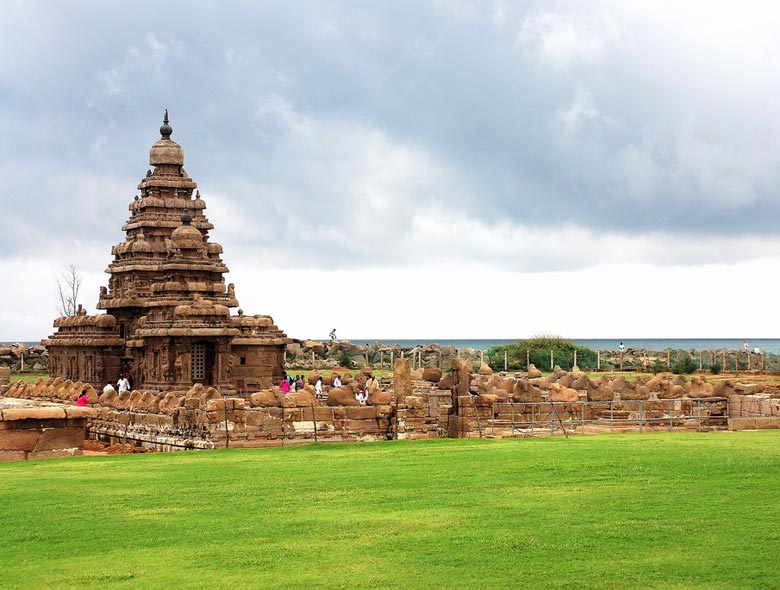Location : 59 km (37 miles ) south of Madras, 64 km (40 miles ) southeast of Kanchipuram
Mamallapuram (officially renamed Mahabalipuram, the name mentioned in Chola inscriptions at the nearby Five Rathas), is a friendly old port city with four kinds of rock structures: monolithic rock temples (rathas); cave temples; temples constructed from a conglomeration of materials; and bas-relief sculptures carved on large rocks. In the 8th century, the Pallava dynasty conducted a thriving maritime trade here, sending emissaries to China, Southeast Asia, and Indonesia; carved stone is all that now remains of these dynamic businessmen, who ultimately ruled for 300 years.
The town of Mamallapuram sits between the beach and the sacred Five Rathas. It’s a wonderful place to visit, especially between December and February, as you can divide your time between exploring magnificent ancient temples and relaxing at a beach resort. In addition to the government shops and the museum, independent shops sell granite images and carvings reminiscent of the temples; many of these are remarkably well executed. The sights are open all day but the best times to visit are early morning and late afternoon.
Here is list of top 9 things to do in Mahabalipuram:-
#1. Shore Temple
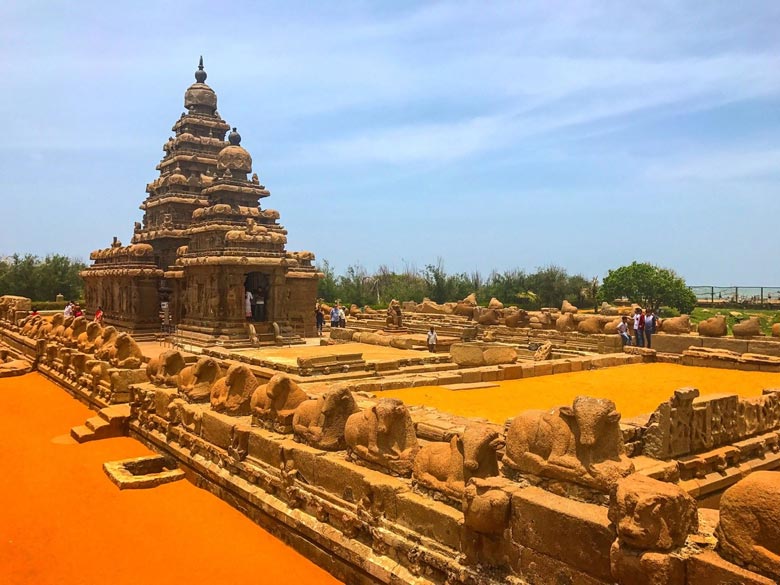
Shore Temple in Mahabalipuram
Standing right on the Bay of Bengal, the Shore Temple has been subject for centuries to the vicissitudes of sun, sea, and sand, so it’s no-table for the degree of detail that remains. You enter the temple from the back, through a courtyard surrounded by a massive wall topped by reclining bulls and two Shiva towers. Although ravaged by time, the calm image of Vishnu, lying in cosmic sleep on the sea with the serpent Sesha at his side, is juxtaposed with the clamor or waves pounding on the sea wall. The Shore Temple was built by the Pallava king Rajasimha in the early 8th century. 21 On ocean; follow signs. fl Temple and Five Rathas Rs. 5, video camera Rs. 25.
#2. Penance of Arjuna
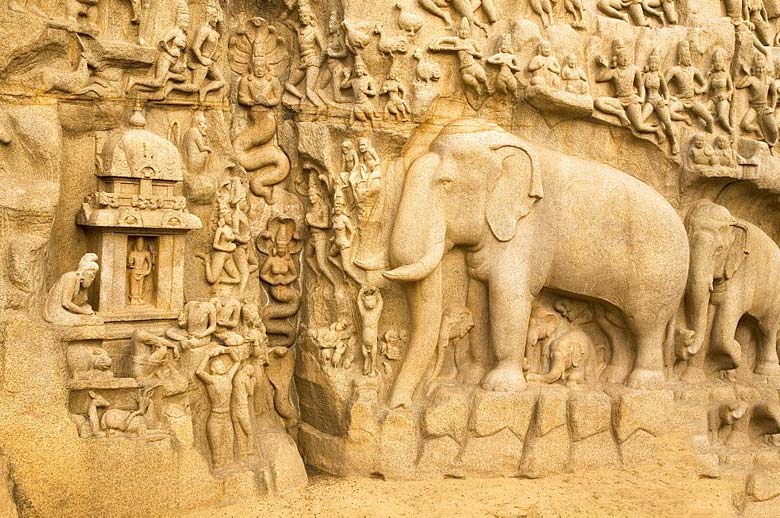
Penance of Arjuna in Mahabalipuram
The world’s largest bas-relief-96 ft long and 43 ft high—the Penance of Arjuna, also called the Descent of the Ganges, is carved on two adjacent boulders. Created by the Pallava dynasty, the work dates from the 7th century. Among the many figures depicted, both mythical and real, is a figure of Shiva with an ascetic Arjuna to his left, standing on one leg. The rendering is thought to be a scene from the Bhagavad Gita, in which Arjuna asks Shiva for help defeating his enemies. An extensive but un-finished Pallava water canal system included a pool above the bas-relief; the idea was that water would cascade down a natural cleft in the rock from this pool, simulating the descent of the Ganges from the Himalayas. The entire, enormous project is a fascinating and vital combination of the mundane and the mythical.
#3. Krishna Mandapam
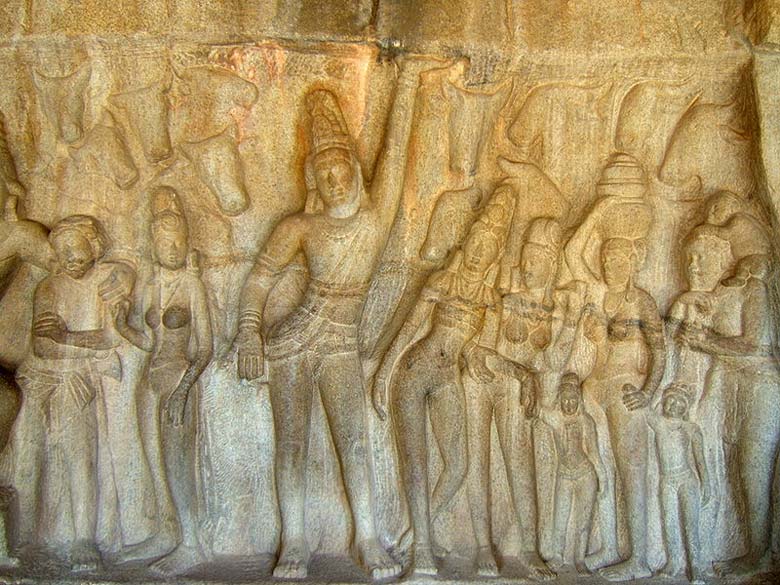
Krishna Mandapam Mahabalipuram
More than a dozen cave temples are cut into the rock hill behind the Penance of Arjuna. Some are unfinished and some have been damaged, but many are quite remarkable. Most are atop the granite hill, so you e have to take a short hike to reach them. The Krishna Mandapam one of the later cave temples, has a naturalistic figure of a cow being milked. A sculpture on the back wall of this 12-column cave is a relief of Krishna holding up the Govardhan Mountain to protect his people from floods ordered by the thunder god Indra.
Also Visit – https://www.swantour.com/south-india-tours/mahabalipuram-pondicherry-tour.php
#4. Five Rathas
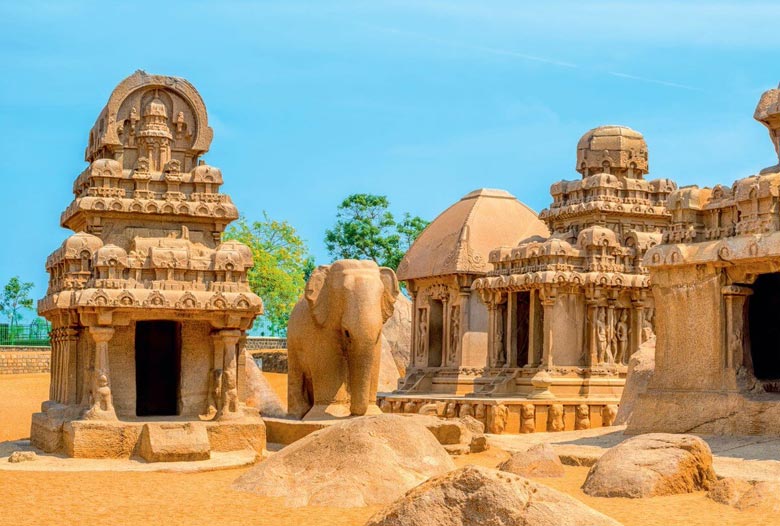
Five Rathas Mahabalipuram
The Five Rathas are also called the Pancha Pandava Rathas for the Five Pandava sons in the Hindu epic Mahabharata. The Rathas, probably the most famous example of Pallava architecture, are carved out of five pieces of granite, each temple distinctive, with its own elevation, plan, and exquisite detail. From north to south, the individual Rathas are the Draupadi (named for the wife of the Pandavas), dedicated to the goddess Durga, a warrior wife of Shiva who rides a lion; the Arjuna (named for the charioteer of the Bhagavad Gita, part of the Mahab-harata), dedicated to the thunder god Indra; the Bhima (named for a Pandava son), the largest temple; the Sahadeva (named for a Pandava prince), part of which represents a Buddhist chapel; and the Dharmaraja, dedicated to Shiva. Three animal sculptures—an elephant, a lion, and the Nandi bull (the vehicles of Indra, Durga, and Shiva)—complete the display. Because all the temples are unfinished, it’s assumed that the animal carvings were meant to have been moved to the appropriate Ratha. The diversity of the images and their meanings reveals the com-plexity of South Indian Hinduism; studying them is a mini course in the history of South Indian temple architecture.
#5. Adivaraha Cave
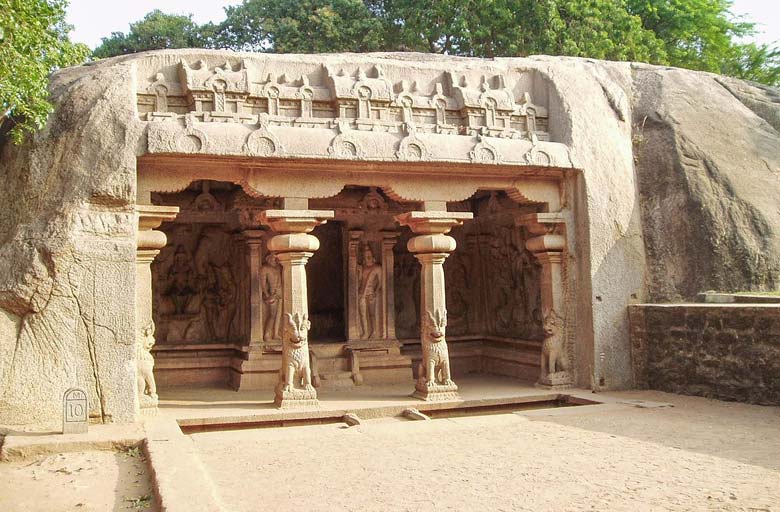
Adivaraha Cave Mahabalipuram
The Adivaraha Cave is interesting for its two portraits of two royal Pallava kings with two goddesses.
#6. Mahishasuramardini Cave
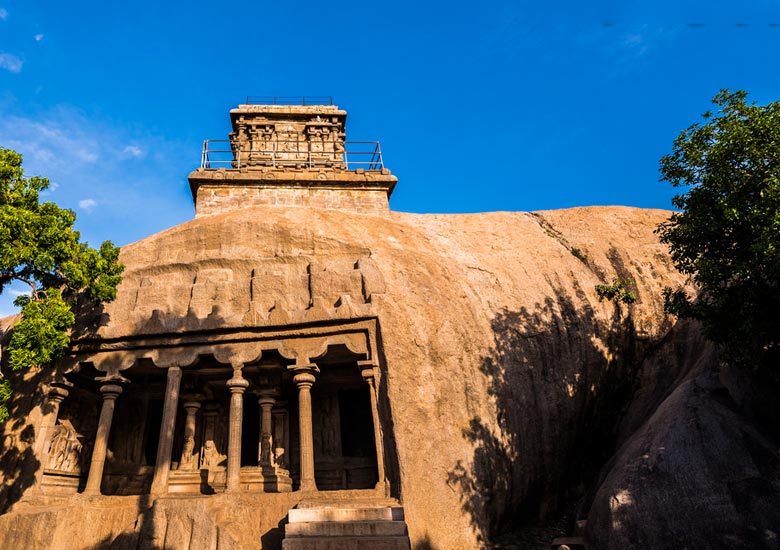
Mahishasuramardini Cave
The Mahishasuramardini Cave, near the lighthouse on top of the hill, is probably the most outstanding of the mandapams. On the right wall is a carved panel depicting Durga riding a prancing lion and defeating the buffalo demon Mahishasura. On the opposite wall, in sharp contrast to this battle scene, is the deeply carved relief of Vishnu reclining on the great serpent Sesha. In this position, Vishnu is usually in a cosmic sleep, epitomizing his role as preserver of the universe. At the back of the cave are three cells containing statues of Shiva, his consort Uma, and their son Skanda-collectively known as Somaskanda, a common Pallava theme.
#7. Lighthouse
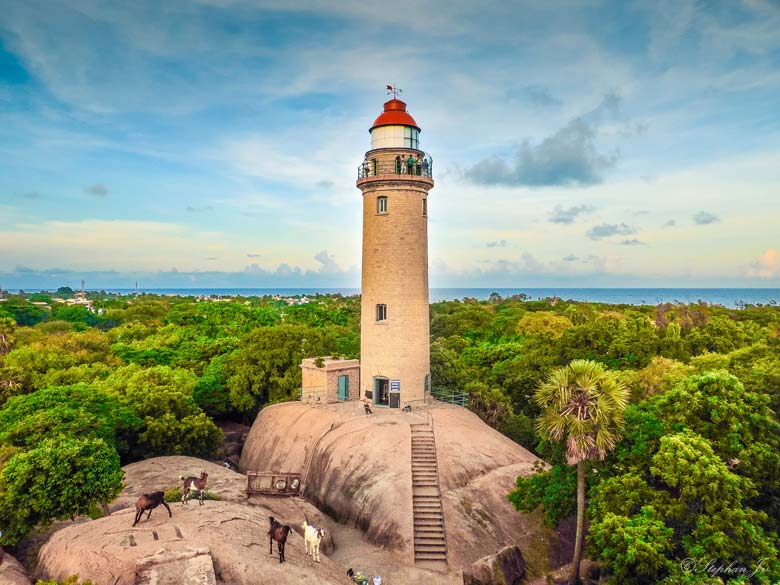
Lighthouse Mahabalipuram
Built by the British and used until just a few years ago, the lighthouse gives a good view and serves as a landmark in navigation. You can climb it daily between 9 and 5:30; admission is Rs. 3. Past the lighthouse, the remaining mandapams and rathas on the hill are not terribly interesting.
#8. Tiger Cave
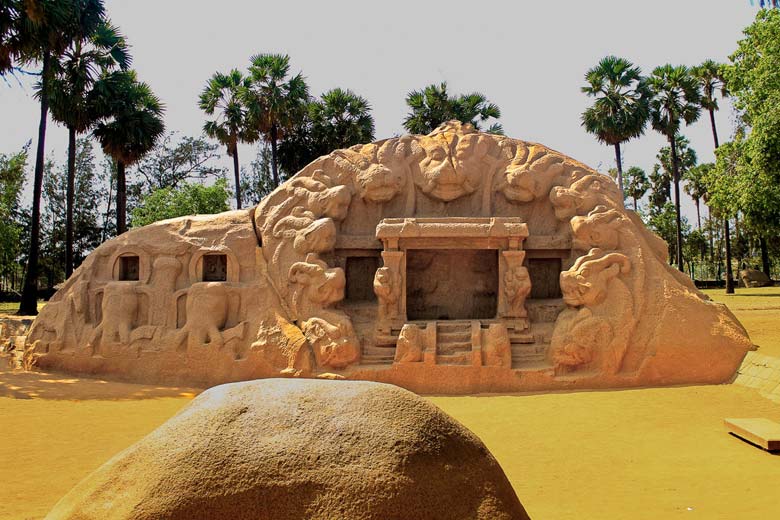
Tiger Cave Mahabalipuram
The Tiger Cave, which is actually two boulders set together, is in a shady grove near the ocean. It’s a favorite picnic spot. Dedicated to Durga, the cave is distinguished by the crown of carved tiger heads around its temple.
#9. Tirukkalukundram
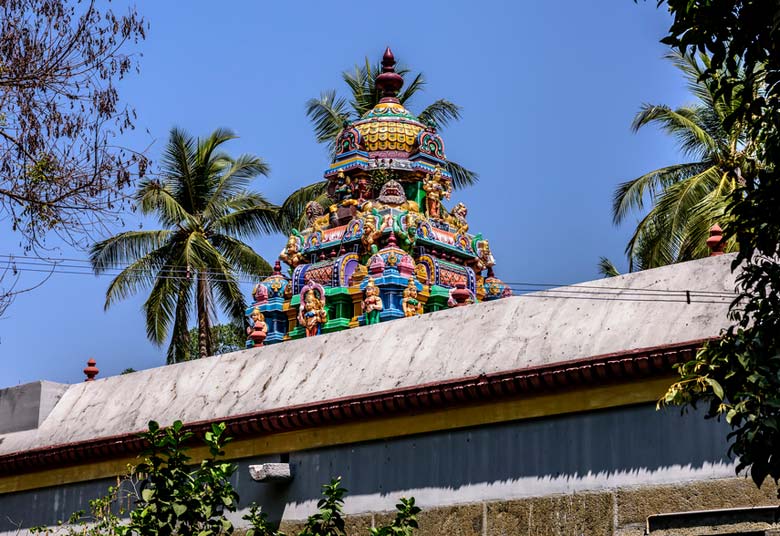
Tirukkalukundram
Tirukkalukundram (Sacred Hill of Kites) is the name of both a village and its temple, which has Dutch, English, and ancient Indian inscriptions. The ride here from Mamallapuram takes you through paddy fields. Pilgrims come to climb the 500 steps to the temple on the hilltop at noon, in the hope that the two kites (hawks) will come to be fed by the Brahmin priests.
For more information on Top 9 things to do in Mahabalipuram contact Swan Tours, One of the leading travel agents in India, Operating since 1995.
